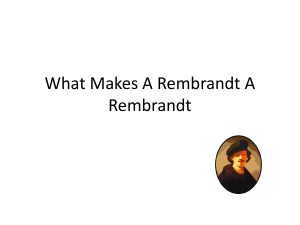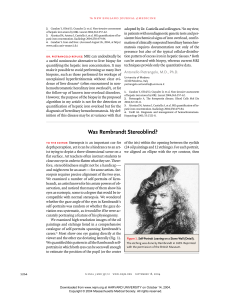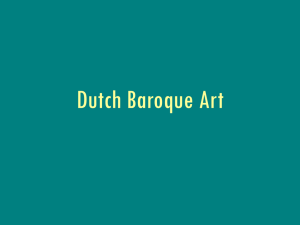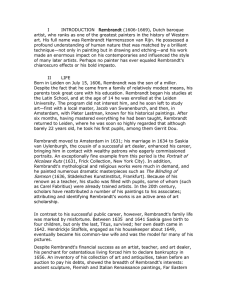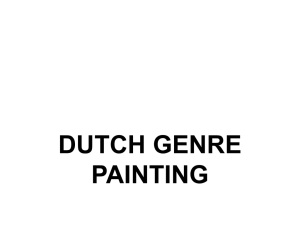Geen diatitel - Eu
advertisement
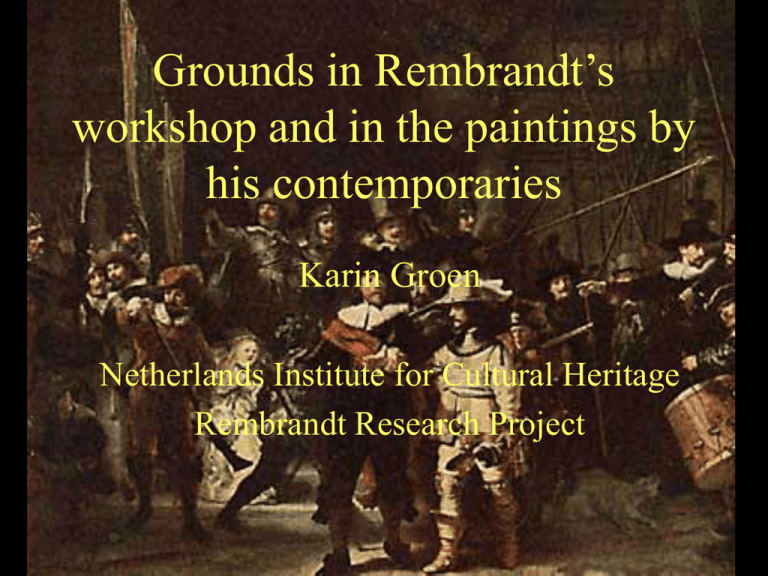
Grounds in Rembrandt’s workshop and in the paintings by his contemporaries Karin Groen Netherlands Institute for Cultural Heritage Rembrandt Research Project ‘Self-portrait’ Stuttgart Research Kühn 1962 to 1965 • 48 painting attributed to Rembrandt • 10 shop works or contemporary copies • 38 other Dutch painters from the 17th to 19th century • By 1965, the grounds of 122 paintings on canvas and panel from various periods ascribed to Rembrandt had been examined. ‘Self-portrait’ Stuttgart the Night Watch Cross-sections made in 1975 Bulletin van het Rijksmuseum, 1976 Incident and transmitted ligth Thin sections of the Night Watch Incident and transmitted ligth Transmitted, polarized light Clay minerals 0,5-1 m Kaolinite? Mica? New sampling necessary for obtaining insight into the occurrence and distribution of the quartz ground! Criteria for sampling: • Paintings by Rembrandt and those ascribed to him: As many works on canvas as possible from Bredius (1935) • Pictures by Amsterdam painters who had nothing to do with Rembrandt Pictures made between 1640 (Night Watch) and 1669 (Rembrandt’s death) Results • 160 canvas paintings investigated • 125 of these made after 1640 • 48 on a quartz ground: almost half of the production • None of the 60 non-Rembrandt paintings made in Amsterdam 1640-1669 has a quartz ground • Canvasses with a quartz ground were used exclusively in Rembrandt’s workshop • These canvasses must have been prepared in Rembrandt’s workshop This find provides a strong supplementary criterion for attributing paintings: Every Rembrandtesque painting on a quartz ground derives from Rembrandt’s studio !! Rembrandtesque ‘Self-portraits’ National Gallery of Victoria Melbourne c.1660 Fogg Art Museum Cambridge Mass. c.1660 Staatsgalerie Stuttgart c.1659 Corpus IV21 Corpus IV22 Corpus IV17 What could have been the reason for Rembrandt using quartz grounds? Quartz ground is clay with a high proportion of ground up sand River clay as used by potters and for making bricks, recommended for priming canvases in written sources, abroad. Clay for bricks and pottery under the microscope River clay, from quarry for bricks Clay along the Old Rhine River clay, from quarry for bricks, Bruggen, near border Germany Old sea clay, Makkum Bare ground (darkened) visible in the Night Watch Br 612 Br 236 Br 410 Br 369 Br 390 Quartz grounds on canvases

